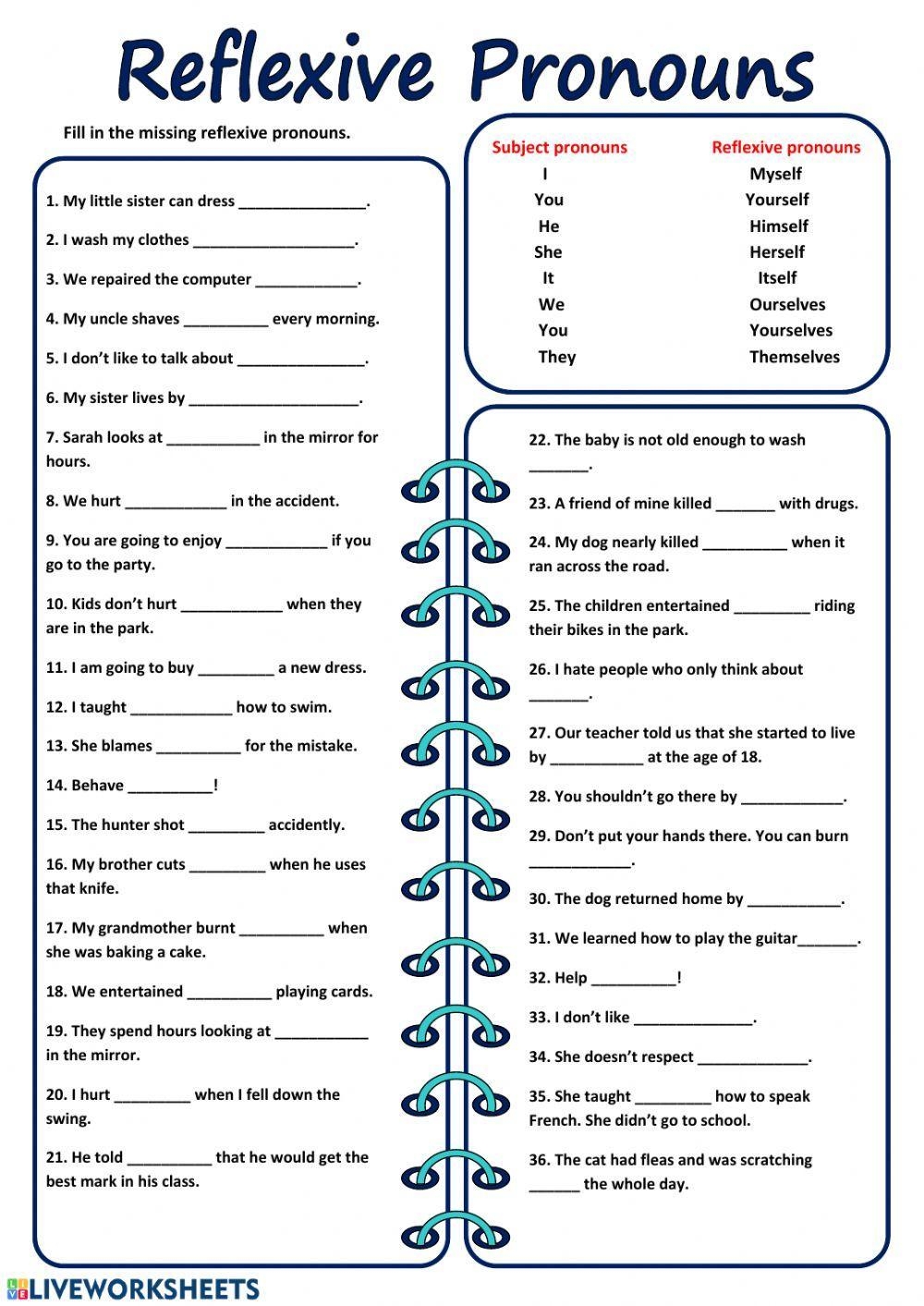In English grammar, reflexive pronouns are used when the subject and object of a sentence are the same person or thing. These pronouns end in -self or -selves and are essential in conveying meaning and clarity in sentences.
Reflexive pronouns include myself, yourself, himself, herself, itself, ourselves, yourselves, and themselves. It is important to understand how and when to use these pronouns correctly to avoid confusion in writing or speaking.
Reflexive Pronouns Worksheet
Below is a worksheet to help practice using reflexive pronouns in sentences:
1. I saw ________ in the mirror.
2. She baked the cake ________.
3. We need to take care of ________.
4. He hurt ________ while playing basketball.
5. They completed the project ________.
After filling in the blanks with the correct reflexive pronouns, check your answers to ensure accuracy. Practice using these pronouns in different contexts to master their usage.
Understanding reflexive pronouns is crucial for clear communication and writing. They add depth and specificity to sentences by indicating that the subject is performing the action on itself. By mastering the use of reflexive pronouns, you can enhance the quality of your writing and effectively convey your thoughts and ideas.
Remember to always use reflexive pronouns when the subject and object of a sentence are the same person or thing. Practice using them in various sentences to reinforce your understanding and improve your language skills.
In conclusion, reflexive pronouns play a significant role in English grammar and are essential for accurate and effective communication. By utilizing them correctly, you can elevate your writing and ensure clarity in your sentences. Keep practicing and incorporating reflexive pronouns into your everyday language to enhance your language proficiency.
